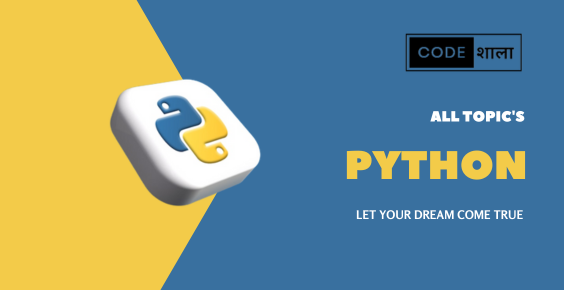
What is Python?

In the ever-evolving landscape of programming languages, Python stands out as a versatile, powerful, and user-friendly option. Whether you are a seasoned developer or a beginner looking to dive into the world of coding, Python offers something for everyone. This article will provide you with an in-depth understanding of Python, from its origins to its real-world applications. Let’s embark on this journey to unravel the mystery of Python.
What is Python?
Python is a high-level, interpreted programming language known for its simplicity and readability. Created by Guido van Rossum and first released in 1991, Python was designed with a focus on code readability, making it an excellent choice for both beginners and experienced programmers. It has gained immense popularity due to its versatility, which allows developers to use it in various applications, from web development to scientific computing.
Python’s Origins
Understanding Python’s roots helps shed light on its design principles. Guido van Rossum, a Dutch programmer, began working on Python in the late 1980s. He aimed to create a language that emphasized clear and understandable code. Guido was inspired by the ABC language and set out to improve upon its shortcomings. The result was Python, named after the British comedy group Monty Python.
Key Features of Python
1. Readability
Python’s syntax is designed to be intuitive, with code that closely resembles plain English. This readability makes it easy to learn and understand, even for those new to programming.
2. Versatility
Python can be used for a wide range of applications, including web development, data analysis, artificial intelligence, and more. This versatility makes it a valuable tool in various industries.
3. Large Standard Library
Python boasts a comprehensive standard library that simplifies many common programming tasks. This vast collection of modules and libraries reduces the need for developers to write code from scratch.
4. Community Support
Python has a vibrant and active community of developers who contribute to its growth. This means continuous improvement and a wealth of resources for learners and professionals alike.
5. Cross-Platform Compatibility
Python is available on various platforms, including Windows, macOS, and Linux. This cross-platform compatibility ensures that Python code can run on different systems without major modifications.
Python’s Applications
Python’s versatility extends to its applications. Here are some areas where Python excels:
Web Development
Python’s web frameworks, such as Django and Flask, simplify web development tasks. With these frameworks, developers can create dynamic and interactive websites efficiently.
Data Analysis and Visualization
Python’s libraries like NumPy, pandas, and Matplotlib are essential tools for data scientists. They enable data manipulation, analysis, and visualization, making Python a preferred choice in data-related fields.
Artificial Intelligence and Machine Learning
Python’s libraries, including TensorFlow and PyTorch, are driving the advancement of AI and machine learning. It’s the go-to language for developing intelligent applications and models.
Automation and Scripting
Python’s simplicity makes it ideal for writing scripts and automating repetitive tasks. Many system administrators and DevOps professionals rely on Python for automation.
Scientific Computing
Python’s SciPy library is a go-to resource for scientific computing tasks. It provides modules for linear algebra, optimization, integration, and more.
Frequently Asked Questions
Is Python a good language for beginners?
Absolutely! Python’s readability and simplicity make it an excellent choice for beginners. It allows newcomers to focus on programming concepts rather than intricate syntax.
What are some real-world examples of Python applications?
Python is used by major companies like Google, NASA, and Facebook. It powers everything from web applications and data analysis to machine learning and artificial intelligence projects.
How can I get started with Python programming?
To begin your Python journey, you’ll need to install Python on your computer. You can then explore online tutorials, courses, and coding exercises to build your skills.
Is Python suitable for scientific research?
Yes, Python is widely used in scientific research due to its extensive libraries and tools for data analysis, simulation, and visualization.
What is the future of Python?
Python’s future looks bright. Its community continues to grow, and it remains a popular choice for emerging technologies like AI and machine learning.
Can I earn a good income as a Python developer?
Yes, Python developers are in high demand, and their salaries reflect that demand. Skilled Python developers can command competitive salaries in the job market.
Conclusion
Python’s appeal lies in its simplicity, versatility, and robust community support. Whether you’re a beginner or an experienced developer, Python has something to offer. Its wide range of applications ensures that learning Python opens doors to exciting career opportunities. So, why wait? Dive into the world of Python and start your coding journey today!

kumar
The Managing Director oversees the overall operations and strategic direction of the organization.
Category
- .NET (3)
- Blog (2)
- Common Technology (1)
- CSS (1)
- Topics (1)
- HTML (4)
- Basic HTML (4)
- Javascript (1)
- Topics (1)
- Laravel (32)
- Php (153)
- PHP Arrays (9)
- Php Basic (1)
- PHP interview (152)
- PHP Strings (12)
- Python (15)
- Python interview (13)
- React.js (32)
- React Js Project (3)
- Uncategorized (118)
- WordPress (114)
- Custom Post Types (7)
- Plugin Development (12)
- Theme Customizer (3)
- Theme Development (1)
- Troubleshooting (9)
- WordPress Customization (13)
- Wordpress Database (10)
- WordPress Example (5)
- WordPress Multisite (9)
- Wordpress Project (3)
- WordPress REST API (14)
- WordPress SEO (10)
Recent Posts
Tags






